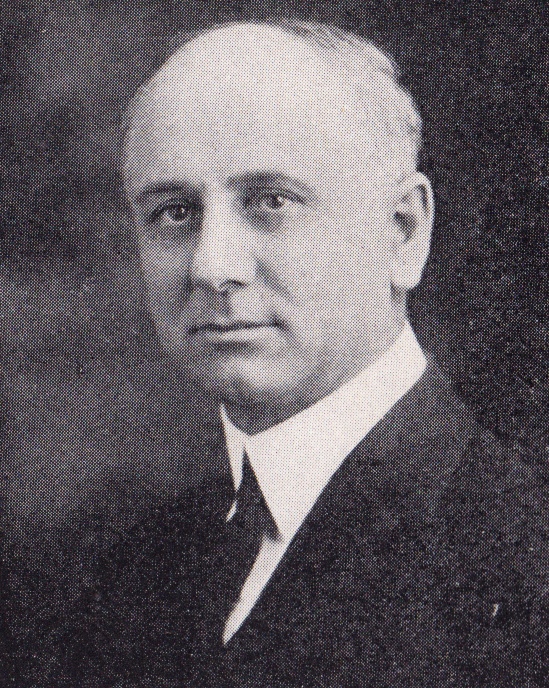16th century German historiographer and reporter Sebastian Franck (1499-1543) wrote concerning the Anabaptists in his work Chronik (III, fol. 188):
The course of the Anabaptist was so swift, that their doctrines soon overspread the whole land and they obtained much following, baptized thousands and drew many good hearts to them; for they taught, as it seemed, naught but love, faith and endurance, showing themselves in much
tribulation patient and humble. They brake bread with one another as a sign of the oneness and love, helped one another as a sign of oneness and love, helped one another truly with precept, lending, borrowing, giving; taught that all things should be in common and called each other ‘Brother.’ They increased so suddenly that the world did fear a tumult for reason of them. Though of this, as I hear, they have in all places been found innocent. They are persecuted in many parts with great tyranny, cast into bonds and tormented, with burning, with sword, with fire, with water, and with much imprisonment, so that in few years in many places a multitude of them have been undone, as is reported to the number of two thousand, who in divers places have been killed….they suffer as martyrs with patience and steadfastness (Rise and Fall of the Anabaptists, 28).
AOG
October 19, 2015
Anabaptism, Biographical, Church, Group Identity, History, Love, Martyrdom, Spiritual Life
Read more >

This is a cross-posting of a piece first posted eight years ago on my blog for The Mennonite. Since then we organized a series here on YAR looking at some of the historical groups that Sawatsky highlights. You can read the articles in that series here.
What if rather than one unified view of Anabaptist we instead looked at our tradition as containing many different streams, in the same way that Richard Foster finds different streams of Christian spiritual practice in Streams of Living Water?
Last week on Young Anabaptist Radicals I wrote about Gregory Boyd’s discovery of Mennonites as well as his dismay at our falling away from our roots. It provoked a lively discussion about percieved divisions in the Mennonite church and deviation by Mennonites from core Anabaptist values. One of the things that became clear in the discussion is that there are many different views of what the core Anabaptist values are and how they should be lived out.
Growing up as a Mennonite, I learned that the way we live our faith is tied to the experience of our predecessors in 16th Century Europe. Though I didn’t study it until college, Harold S. Bender’s Anabaptist Vision informed much of what I viewed as Mennonite. Writing in 1944, Bender defined the Swiss Brethren tradition as “the original evangelical and constructive Anabaptism” as opposed to the other streams of Anabaptism “which came and went like the flowers of the field.”
And so it was the story of the Swiss Brethren re-baptizing one another in 1525 in Zurich that I learned at the Mennonite high school I attended. Felix Manz, Conrad Grebel and George Blaurock were the founding fathers of our faith. As Mennonites today we should look to their example.
This summer at the Mennonite convention in San Jose, I heard an alternative to this model. At a workshop I attended, Dale Schrag introduced four different types of Anabaptism first proposed in 1992 by Rodney Sawatsky “The One and the Many: The Recovery of Mennonite Pluralism” published in Anabaptism Revisited; Essays on Anabaptist/Mennonite Studies in Honor of C. J. Dyck.
In the essay, Sawatsky acknowledges the dominance of Bender’s vision, but offers an alternative model for contemporary Anabaptism based on more than just the story of the Swiss Brethren. He identifies the emphasis of each stream and connects it with a different leader or group of 16th century Anabaptists.
Here’s what it looks like:
|
Anabaptist Stream
|
Emphasis
|
16th Century Corollary
|
|
Separationist
|
Social/cultural non-conformity to the world
|
Swiss Brethren with Schleitheim Confession
|
|
Establishment
|
Biblical nonresistance/personal holiness
|
Menno Simons
|
|
Reformist
|
Discipleship of Christ/service to the world
|
Pilgram Marpeck
|
|
Transformationist
|
Political/ideological nonconformity to the political powers
|
Hans Hut and apocalyptic Anabaptists
|
(more…)
TimN
April 24, 2015
Four Streams of Anabaptism Series, History, Uncategorized
Read more >

In his 1941 book, The Story of the Mennonites, historian C. Henry Smith describes the 1847 church conflict that led to a group of Mennonites leaving Franconia Conference to create Eastern Pennsylvania District of Mennonites. This new group eventually launched the General Conference Mennonite Church. In describing this schism among Mennonites, Smith observed a broader pattern:
It will be observed that the questions in dispute did not concern themselves with fundamental Mennonite doctrine. Mennonite quarrels never do. The new party did not differ from the old in its belief in adult baptism, non-resistance, opposition to the oath, rejection of secret societies, and for a time even in the retention of footwashing. The chief distinction lay rather in a more tolerant attitude of the “News,” as they were called by the “Olds,” toward the non-Mennonite world, both political and religious. (p. 602-603)
The “News,” led by John H. Oberholtzer, went on to adopt such radical innovations as Sunday School.
The roots of our ruptures
Why are Mennonites so prone to church divisions? (more…)
TimN
March 19, 2015
History, Mennonite Church USA, Polarization, Schism
Read more >
This post is the final part of an essay looking at the Anabaptist movement through the lens of social movement theory. See Part III in the series here, which compares the early Anabaptist movement with four stages of social movements.

Photo by Rachel Friesen
Gaps, Tensions and Overlaps
Though there are apparent overlaps, it is clear by now that there are also gaps where the phases of social movements inadequately describe or leave out elements of the Anabaptist movement. Sociologist Charles Tilly writes, “The employment of invariant models…assumes a political world in which whole structures and sequences repeat themselves time after time in essentially the same form. That would be a convenient world for theorists, but it does not exist.”
One shortcoming of social movement theories is that they sometimes fail to capture the many complex, different stories within an observed movement. They tend to look at movements as a whole, and the four phases are very linear in their approach. While this progress-oriented “bird’s eye view” is often helpful, it misses the contradictions present on the ground. C. Arnold Snyder offers a more nuanced understanding in his way of describing the Anabaptist movement as a polygenesis rather than monogenesis. He highlights the similarities and differences in how Swiss, South German-Austrian, and North German-Dutch Anabaptisms developed, conversed and converged. The polygenesis approach does not lend well to the homogenizing categorization implicit in social movement theories. For example, one may argue that Anabaptism did in fact experience the fourth phase of decline due to eradication by the sword in Austria and many parts of South Germany, though in other places it survived. (more…)
KaterinaF
March 29, 2014
Anabaptism, History, Social movements
Read more >

by Jerrett Lyday
Is it not so, that from its conception, Christianity has always, to some degree, been wrapped up and consumed by Empire? There is a dark and ominous foreshadowing in the temptation of Christ, where Satan offers up the kingdoms of the world, in all their glory. We realize, of course, that we have submitted ourselves to the demonic, that now, in hindsight, Christ left the desert with a golden crown on his head, and descended upon his glorious, gilded throne, rather than dying there on the hill in golgotha.
Perhaps this is what Martin Scorsese really intends with his film, “The Last Temptation of Christ”, where Christ (Willem Dafoe) submits to the temptation to wield God’s power and remove himself from the cross. He goes on to live a normal life, marrying Mary Magdalene having children, etc. Perhaps Scorsese gets at a horrible reality of our Christian condition today, that our Christianity looks more and more like Christ submitted to Satan’s temptations, that he had given into the conditions sanctioned by the ruling elite, and surrendered into the bourgeoisie, leaving our world relatively unchanged and forever steeped in slavery. (more…)
JerrettL
March 28, 2014
Anabaptism, History
Read more >
This post is the third part of an essay looking at the early Anabaptist movement through the lens of social movement theory. See Part II in the series here, which looks at definitions of social movements.

Photo by Katerina Friesen, Sainte-Chapelle
The four generally recognized stages of a social movement are emergence, coalescence, bureaucratization, and decline.(1) Some social movements never evolve beyond the first two or three stages, and others continue in new forms if they are adapted into mainstream society. The model of four stages of social movements sheds light on elements of the Anabaptist movement, though it has limitations, since, as I have argued, the Anabaptist movement was not a social movement according to modern definitions.
Emergence
The first stage of social movements, emergence, is seen as the time when consciousness of a problem or societal ill is just forming. Collective action has not yet grown out of the discontent that is felt by many people, and organized leadership has not yet emerged though “agitators” may be at work at the grassroots. I believe that both the Peasants’ Revolt and the Protestant Reformation were crucial in this first stage of emergence.
The Peasants’ Revolt (1524-1525) laid the groundwork for widespread social unrest, and raised issues of unjust rulers and the need for social reform. Snyder writes that many early Anabaptists, especially in South German regions, were closely involved with the peasant movement for social reform and shared many of their egalitarian ideals. Hubmaier, for example, started his evangelical reform teachings in Waldshut, which greatly supported the peasants. Snyder also cites other early Anabaptist leaders’ connection or collaboration with the peasants; these leaders included Reublin, Brötli, Krüsi, Grüningen, Hut and Rinck. He writes, “Many of the same religious, social and economic impulses that fueled the so-called Peasants’ War remained issues within the Anabaptist movement well after the peasant uprising had been suppressed. Many of the first Anabaptists were active in these protest movements ‘from below.’”(2) (more…)
KaterinaF
March 27, 2014
Anabaptism, History, Social movements
Read more >
This is the first in a four part series from my essay entitled, “The Early Anabaptist Movement through the Lens of Social Movement Theory.”
By way of introduction to my piece, I wrote the following poem. I invite you to read it as an exercise of imagining what the emerging Anabaptist movement must have felt like to a new believer.

Movement of the Word, 1525-1535
The word spreads on farms,
in taverns and barns, in sewing circles
the fold grows, stitch by stitch.
Behind the looms we whisper
good news and now dozens come to sit
on stumps and stone, our forest pews.
We dare not learn our leaders’ names,
for fear that tortured tongues might speak;
we know the brothers when they say,
“The Lord’s peace remain with thee.”
‘Til He returns to vanquish our foes,
many join Christ’s agony. (more…)
KaterinaF
March 15, 2014
Anabaptism, History, Martyrdom, Poetry, Politics, Social movements
Read more >
This multi-part post is the third in the Anabaptist Streams series here on Young Anabaptist Radicals, in which we’ll be looking at different streams of early Anabaptism and making connections with our own context. The series will feature different authors over the coming months and is loosely based on Rodney Sawatsky’s model of four streams of Anabaptism. It features different authors over the coming months, each looking at a different stream. In this post and in the next two weeks we will focus on Pilgram Marpeck.
In 1520, Pilgram Marpeck, trained in civil engineering, was welcomed to the brotherhood of miners in Austria . After doing some favors to the Archduke Ferdinand over the next five years, he was appointed by Ferdinand to be mining superintendent over Rattenberg. As normal in such a position, Marpeck gave an oath of loyalty to Ferdinand, vowing to obey all of Ferdinand’s commands and to obey all the laws of the land. In that charge he represented the Archduke in taking custody of rebels, and held the lives and deaths of the miners under his care in his hands.
In this time, the writings and controversies of Martin Luther enflamed Europe. Although his career and solid government connections would be effected by any strong religious conviction, he held conversations with young Lutherans and were convinced by their arguments. (more…)
SteveK
October 19, 2013
Anabaptism, Four Streams of Anabaptism Series, HistoryAnabaptism, Anabaptist Streams
Read more >
It is my desire in the closing segments of my contribution to this series to address an issue that is controversial in nature. That subject being Christian separatism. When the average person that shows interests in Anabaptistica surveys the writings and beliefs of the Swiss Brethren they will pause at article IV of the Schleitheim Confession and immediately find some difference of opinion with it’s content. It reads:
We have been united concerning the separation that shall take place from the evil and the wickedness which the devil has planted in the world, simply in this; that we have no fellowship with them, and do not run with them in the confusion of their abominations. So it is; since all who have not entered into the obedience of faith and have not united themselves with God so that they will to do His will, are a great abomination before God, therefore nothing else can or really will grow or spring forth from them than abominable things. Now there is nothing else in the world and all creation than good or evil, believing and unbelieving, darkness and light, the world and those who are [come] out of the world, God’s temple and idols. Christ and Belial, and none will have part with the other.
To us, then, the commandment of the Lord is also obvious, whereby He orders us to be and to become separated from the evil one, and thus He will be our God and we shall be His sons and daughters.
Further, He admonishes us therefore to go out from Babylon and from the earthly Egypt, that we may not be partakers in their torment and suffering, which the Lord will bring upon them.
From all this we should learn that everything which has not been united with our God in Christ is nothing but an abomination which we should shun. By this are meant all popish and repopish works and idolatry, gatherings, church attendance, winehouses, guarantees and commitments of unbelief, and other things of the kind, which the world regards highly, and yet which are carnal or flatly counter to the command of God, after the pattern of all the iniquity which is in the world. From all this we shall be separated and have no part with such, for they are nothing but abominations, which cause us to be hated before our Christ Jesus, who has freed us from the servitude of the flesh and fitted us for the service of God and the Spirit whom He has given us.
Thereby shall also fall away from us the diabolical weapons of violence–such as sword, armor, and the like, and all of their use to protect friends or against enemies–by virtue of the word of Christ: “you shall not resist evil. (more…)
AOG
October 12, 2013
Anabaptism, Four Streams of Anabaptism Series, History, Uncategorized
Read more >
This multi-part post is the second in the Anabaptist Streams series here on Young Anabaptist Radicals, in which we’ll be looking at different streams of early Anabaptism and making connections with our own context. The series will feature different authors over the coming months and is loosely based on Rodney Sawatsky’s model of four streams of Anabaptism. It will feature different authors over the coming months, each looking at a different stream.
In this prefatory portion as a substitute for addressing each notable member of the group that is presently known as the Swiss Brethren, I will address the assembly as a whole for to do otherwise would exhaust the allotted time for this entire series of presentations. Each of those member were vivid distinctive characters that laid the foundation of a movement that no only altered the Ecclesiastical world but ironically impacted the country that epitomizes the empire they challenged via their indefatigable ministry.
In the beginning during their tenure in Zollikon and St. Gallen they went by the designation “Brothers in Christ”, it was not until later they became known as the “Swiss Brethren”. Their antagonists “both Protestant and Roman Catholic, used the label Anabaptist (“rebaptized”) for the radical reformers because they baptized adults who had already been baptized as infants” (Kraybill 10). However, as mentioned formerly from “the beginning in Zollikon and St Gallen they referred to themselves as “brothers in Christ.” Later, from some time in the 1540s, they were called the “Swiss Brethren,” the name being coined by two other Anabaptist groups that wanted to maintain an identity distinct from them — the Hutterites and the Marpeck brotherhood” (Ibid.).
History acknowledges the Brothers in Christ (hereafter Swiss Brethren) as the principal Anabaptists that engaged in the first disciples’ baptism of the movement “in Zurich in January 1525 in an effort to create immediately a complete, uncompromising and uncompromised reformed Church” (Stayer The small group consisted of Felix Manz, Conrad Grebel, and George Blaurock among other like-minded believers. They severed ties from the Magisterial Reformer Huldrych (or Ulrich) Zwingli for the reason that they felt reforms was not progressing in an expeditious fashion.
(more…)
AOG
September 28, 2013
Anabaptism, Four Streams of Anabaptism Series, Group Identity, History
Read more >
This is the second in a two part series on David Joris and establishment Anabaptists here is the first: Establishment Anabaptists, part 1: David Joris’ authority and Menno Simons. This is also part of a broader series on the Four Streams of Anabaptism.
Today, we tend to think of Mennonites as descended from all early Anabaptists. However, the followers of Menno Simons had some distinctive practices that set them apart from other Anabaptists of their era. Looking at them through the eyes of David Joris and his disciples can help us to understand what set them apart more clearly.
Joris’ approach clashed dramatically with the leadership style of Menno Simons. As I discussed in part one of this series, Joris was charismatic; people were drawn to him.
He excelled at accommodation, diplomacy and mediation between different Anabaptist sects, "ranging from the peaceful followers of Obbe Philips to the marauding adherents of Jan van Batenburg." (Zijlstra 251). Simons, on the other hand, was a rural priest whose focus on the purity didn’t make any sense to Nikolaas Meyndertsz Blesdijk, the primary lieutenant of Joris:
Blesdijk pictures the Mennonite elders as hostile and closed-minded, both unwilling and unable to carry on a religious discussion with orderly marshalling of evidence and in the spirit of gentleness (sachtmoedicheyt) that distinguish a true teacher.
Instead of behaving civilly and honorably, argues Blesdijk, the Mennonites are hypocritically preoccupied with distinguishing and separating themselves, whether by manner of dress, appearance or words …
Since they shun their opponents, forbidding all moral human contact with them, in total disregard of the initiation of the ban in Matthew 18 and the New Testament examples of its use, it is not surprising that they are so fixed in their opinions: they seldom speak with anyone who thinks otherwise than they. (Stayer, "Davidite vs. Mennonite" 464)
(more…)
TimN
September 26, 2013
Anabaptism, Four Streams of Anabaptism Series, History
Read more >
We do have a poetry category and I thought I’d invite it out of the dusty corner to join us for a little conversation today with Mennonite poet, Jeff Gundy. I’ll open the space by sharing a poem of his, a bit of a story from him to go with it and then a chance to ask him questions in the comments.
When Madonna Met Menno
“You’re a slut,” he said, “but God loves you anyway.”
She took a long pull on her beer. “Don’t be simple,”
she said. “I was a Catholic schoolgirl. I’ve known that
since I was twelve.” She was all knees and ankles,
and he was a river toad, the two of them crammed
into a tiny booth among the hard-drinking yuppies.
“Besides, I’ve got babies now,” she said, “and all that
whore stuff was for sales anyway.” “I know what you mean,” (more…)
TimN
September 20, 2013
History, Martyrdom, Poetry, Sex
Read more >
This multi-part post is the first in the Anabaptist Streams series here on Young Anabaptist Radicals, in which we’ll be looking at different streams of early Anabaptism and making connections with our own context. The series will feature different authors over the coming months and is loosely based on Rodney Sawatsky’s model of four streams of Anabaptism. It will feature different authors over the coming months, each looking at a different stream.
In this article (and two following) I’ll focus on the Davidites, a little known Anabaptist sect that had a tremendous impact on Menno Simons and the group that became the Mennonites, what Sawatsky identifies as the establishment stream. The Davidites were the followers of David Joris, an urban prophet responding to massive disruption of the traditional social fabric, what Ferdinand Tönnies called Gemeinschaft (Graham and Haidt, 376). Understanding Joris can help us understand Mennonites and how they became who they are today. I’ll be drawing heavily on Gary Waite’s David Joris and Dutch Anabaptism, 1524-1543.
 David Joris, painted between 1635 and 1665. From Wikipedia
David Joris, painted between 1635 and 1665. From Wikipedia
We’ll start by looking at how Joris established his authority as a leader. Anabaptists as a movement rejected traditional sources of authority, so the question of how to organize their own communities was constantly evolving.
(more…)
TimN
June 23, 2013
Anabaptism, Four Streams of Anabaptism Series, History, Power
Read more >
Love, compassion, joy, and equanimity are some of the hallmarks of the teachings of Jesus. But those concepts didn’t originate with Jesus.
He found them tucked away in the nooks and crannies of the Torah. Almost every saying in the Sermon on the Mount is a commentary on passages from the Hebrew Scriptures. The genius of Jesus was the way in which he put his own “spin” on the Scriptures, highlighting and elevating the positive aspects of God’s personality, while ignoring and rejecting the negative aspects.
The ideals of love, compassion, joy, and equanimity weren’t the unique property of the Judaic tradition, however. They could also be found earlier, and further east, in what is now India, Nepal, Bhutan. In the Fifth Century before Jesus, a man named Gotoma developed a body of teachings based on what are called “The Four Immeasurables”: (more…)
CharlieK
June 18, 2012
Anabaptism, Awesome Stuff, Change, Church, City, Civilization, communication, Community, Contemplation, culture, Current Events, Dumb Stuff., Education, End Times, Ethics, Evangelism, extinction, Foreign Policy, Global Church, God, Group Identity, History, Indigenous, Interfaith, International Relations, Judaism, Love, MCC, Mennonite Church USA, Nonviolence, The Bible, Tolerance, Urban Ministry
Read more >
My young, my very young anabaptist radical friends,
you’re all much too young to remember this, so let me – as an ancient of days – tell you about something that is much older than you. …
No actually, I don’t want to talk about the past, but rather about how a past event is being overcome by the present and future! This October it will have been (note the future perfect tense!), yes this October the 28th of 2012 it will have been 1700 years since Constantine won the battle of the Milvian Bridge bearing on his standard the sign of the cross. He raised the severed head of his enemy on a spit as a sign that the “Christian god” had shown him favour.
This occasion is a sad day for many followers of Jesus who regret that our church leadership decided to accept the offer of the Emperor to endorse his military victory and accept the generous sinecures of the state. They laid down the cross and took up the sword. The unholy alliance between Constantine and the bishops of the Roman empire is the most significant (human) event of church history. As a consequence, the Church aided in the violent aggression against Jews and Muslims, against Africans and other peoples, against so-called witches and heretics. The medieval church believed that pope and emperor were entrusted with the two swords of Christ (Luke 22:38). Unfortunately, the repercussions persist to this day. (more…)
JaJaFe
April 13, 2012
Anabaptism, Church, History, Nonviolence, Young Folks
Read more >






 David Joris, painted between 1635 and 1665. From
David Joris, painted between 1635 and 1665. From